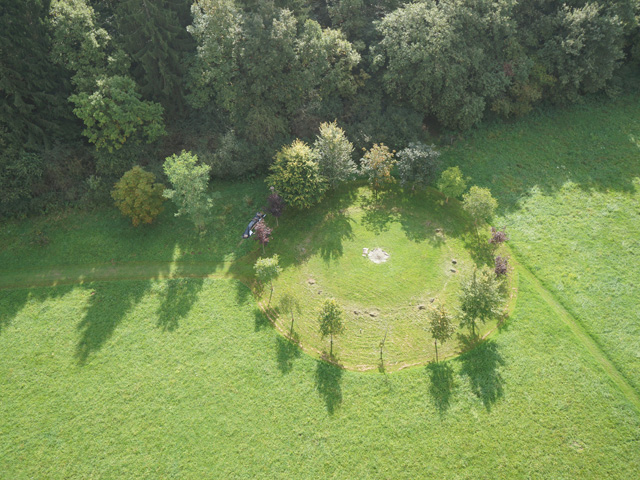Third annual conference
September 3–7, 2018
Beuerhof Farm, Vulkan Eifel, Germany
We are all at once both a composition and a composer. We have the ability not only to compose the future of our own lives, but to help compose the future of everyone around us and the communities in which we live.
~ Maya Angelou
With colleagues Gisela Wendling, David Sibbet, and Holger Scholz, we are excited to announce the third annual gathering of our Leading as Sacred Practice conference. We will be returning again to the extraordinary land at the Beuerhof Farm, Vulkan Eifel, Germany. In 2017, we had an equally extraordinary gathering at the Institute of Noetic Sciences in Petaluma, Calif.
As with my previous works, The Stirring of Soul in the Workplace and The Power of Collective Wisdom, I am interested in bringing to the forefront a network of leaders and organizational practitioners who have the spiritual conviction, psychological sophistication, and behavioral skills to create positive change. A sense of humor, playfulness, and stubborn persistence to do good will also come in handy. Perfection is not necessary or sought. We are not coming with answers but with a faith in the co-creative process.
Each of the previous conferences had a personality of its own, but some elemental patterns are beginning to emerge and will be evident at our upcoming gathering. Here are two patterns worth mentioning.
Creating psychologically safe space
We are consciously preparing the land, the group, and the physical setting to be a safe, generative space for mutual sense making, dynamic dialogue, and collective action. If there is one skill that leaders and facilitators must practice in today’s volatile world, it is the ability to design spaces and settings that allow for constructive engagement.
We do this by creating repetitive behaviors that deepen the encounter with self, others, group, and land. For example, each morning different opportunities are available. Some members of the group may wake early to greet the sun rising; others may walk alone or in small groups awakening awe in relation to the natural world; still others may join in yoga or movement. During the day, there is a rhythm to events that are planned and emerge: dedicating specific times for intellectual stretching, physical stretching, exploration of the land, engagement with ritual, and collective actions such as drumming.
Exploring archetypal patterns behind traditional ceremonies and newly created rituals
We are consciously seeking insight into how to activate ritual and ceremony in our personal lives, work, and client engagements. The role that ritual and ceremony play in our lives as a collective is essential, yet too often they have been beyond our reach, associated with specific traditions or exclusive by the nature of who practices them. Rituals are symbolic acts that remind us we are part of a larger collective. They can have great impact when continually renewed and supported in community.
What we have done is open the practice of ritual and ceremony to inquiry and exploration. How can it be used communally? How is it relevant to organizations? How can it help us feel connected to each other? A simple ritual like the handshaking ceremony found in Native American practices as well as some churches (called the right hand of fellowship) revitalized the way I now end meetings in some of the organizations I work with.
We need rituals today that speak to our collective situation. We need to be conscious of how rituals support change and what distinguishes them from institutional habits. The result is greater organizational adaptability and a growing awareness of how ritual remains relevant in contemporary times. Rituals teach us how to create sacred space, which involves individual and collective intention.
Rituals can also be used for personal growth and learning. In past conferences, we have had small teams create rituals that speak directly to our personal growth as leaders, connecting threads of meaning between personal and collective longings. In the safety of community, we are more inclined to be vulnerable and more willing to acknowledge our learning edges. The outcome is that each person gains confidence in what makes him or her unique as a leader.
We also plan a “high ceremony” that involves everyone and requires emergent learning. In Germany we used the container of the sweat lodge to anchor our practice, while in Petaluma we used the geometric design of a labyrinth.
Whether you come from a spiritual or secular background, the Leading as Sacred Practice conference helps you to see and cultivate the fundamental patterns of group formation that bring teams to life and can make a difference in the world.
If you think this is right for you, come join us.
For more information, go to:
The website of Kommunikationslotsen to register for LASP Conference 2018.
Quick link and early bird registration ticketing portal.
GLEN Community — Register on the GLEN site.



0 Comments